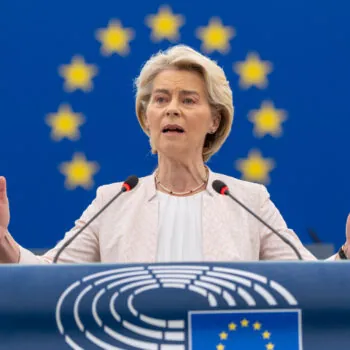Today saw the EU launch its State of the Energy Union report, an annual set-piece occasion to review progress towards the EU’s objective of achieving ‘a resilient Energy Union with a forward looking climate policy’. Here’s 5 things we’ve learned:
-
Trump can’t derail Europe’s clean energy transition
European Commission Vice President Maroš Šefčovič and Commissioner Miguel Arias Cañete both used the opportunity of the State of the Energy Union to send a message beyond Europe: even with a climate sceptic in the White House, the EU will double down on clean energy leadership.
Šefčovič told the FT: “without the United States, it might be more difficult. But nevertheless, it will not deter us from our path, from our goal, and I believe that history will vindicate our choice.”
Cañete, meanwhile proclaimed: “Despite the current geopolitical uncertainties, Europe's forging ahead with the clean energy transition.”
- Progress numbers wobble
At first glance, the clean energy numbers for 2015 look frankly alarming. Emissions rose; energy use rose; renewable deployment fell.
However, following big advances in previous years in greenhouse gas reductions, energy efficiency and renewables deployment, the European Commission is insisting that the EU is still firmly on track for its 2020 targets. Good. Emissions and energy use fell so far in 2014, the argument goes, that 2015’s rise is just a return to the trend line.
Even if 2015’s wobble turns out to be a temporary blip, it should add urgency to the need for the Investment Plan for Europe and EU budget to kick-start clean energy investment, for the swift agreement of a Clean Energy package with teeth, and for member states to crank up their own actions.
- Stranded assets are on the agenda
Analysts and NGOs have long been raising concerns about over investment in fossil fuel infrastructure in Europe, from coal plants to gas pipelines.
Now the European Commission has sounded a warning about stranded asset risk too, arguing:
In view of scarce resources in the Member States, public resources should be used smartly. Member States should make sure that their support to energy infrastructure in the widest sense is in line with the principles of the Energy Union. Support should only be given if in line with the long-term energy policy of the European Union, avoiding stranded assets and carbon lock-in.
This is an important pivot, with big implications both for EU infrastructure planning and spending in the EU budget.
- Clean can be good for industrial competitiveness
The State of the Energy Union paper also pivots from focusing on avoiding high carbon leakage to supporting the new clean industries of the future. The State of the Energy Union paper announced a new Clean Energy Industrial Competitiveness Forum will be set up to ensure research and development money actually feeds through into creating new markets.
Meanwhile, analysis in the report showed just how far energy efficiency is already supporting the competitiveness of Europe’s manufacturing industry:
Compared to its main economic partners, the European manufacturing industry had in 2014 the second lowest real unit energy costs as a percentage of value added, just after the USA. China, Russia, Japan and Australia show substantially higher values than the European Union. The good performance of the European Union is mostly explained by the low levels of energy intensity of the manufacturing sector which has helped to compensate higher real energy prices.
- Cities are where the action is
All too often, EU energy politics can seem like a tug of war between European institutions and member states. Meanwhile however, it is cities and local actors who are getting on with the hard job of making things happen. The State of the Energy Union rightly focuses in on cities as a key force in driving the energy transition. It notes:
Cities are responsible for a quarter of all public expenditure and almost half of public investment. They produce 68% of the Gross Domestic Product (GDP) of the European Union with 62% of the jobs, are key players in the effort to decouple greenhouse gas emissions and resource consumption from economic growth and help national economies become more knowledge-based and competitive. This is where the modernisation of Europe's economy starts.
On the same day as the state of the Energy Union, Energy Cities published their own LOCAL State of the Energy Union report which sets out what individual European cities are already doing to make the energy transition happen, and the EU policy changes that would make their lives easier. This focus on local actors is a welcome change to the usual stalemate, and an important reminder of the forces that will need to be harnessed as Europe’s energy system transforms itself.


